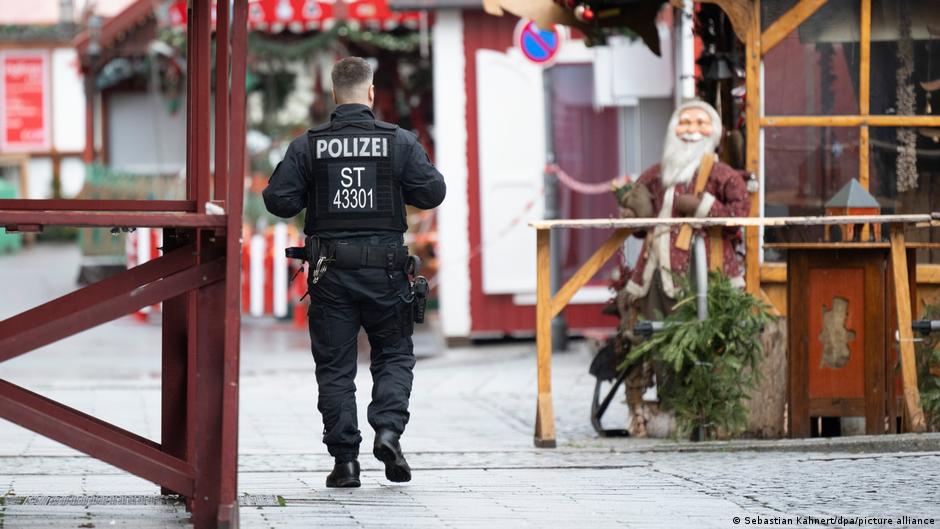A car as a weapon: It evoked memories of the 2016 attack by Anis Amri on the Christmas market in Berlin’s Breitscheidlitz and a similar attack by an Islamic extremist with a truck in the southern French city of Nice.
In December 2024, a man drove a rental car into a crowd at a Christmas market in the eastern city of Magdeburg (Saxony-Anhalt) shortly after 7 p.m., killing a 9-year-old boy and five women aged 45 to 75. More than 300 people were injured, some seriously. According to prosecutors, the attack lasted one minute and four seconds.
The trial of Taleb A*, a 50-year-old Saudi Arabian man, begins on Monday at the Magdeburg Regional Court. The indictment charges him with 338 counts of murder and attempted murder and committing “treacherous assault” with “evil intentions”. Prosecutors said in their statement that they would seek the German legal equivalent of a first-degree murder sentence.
A lone culprit?
Media have reported that the accused was dissatisfied and frustrated with the progress and outcome of a civil dispute, as well as the failure of several criminal complaints filed by him.
The prosecution believes that Taleb A. acted alone. “According to the results of the investigation, he planned and prepared the crime in detail over several weeks without the help of associates or confidants,” it reads.
The defendant’s profile differs from that of Breitscheidlitz attacker Amri and other suspected Islamic extremists who came to Germany as refugees in recent years. Taleb A. has lived here since 2006 and most recently worked as a doctor in the forensic psychiatric unit for convicted criminals in Bernburg, a city 40 kilometers (25 miles) south of Magdeburg.
Christmas market safety
The findings of the investigative committee in the state parliament of Saxony-Anhalt showed that the defendant had long-term health problems.
The committee is also looking into why the Christmas market was not adequately secured with bollards. Such concrete blocks have become standard since the attack on Breitscheidlitz.
According to the investigation, the defendant took advantage of the security gap and drove through the crowd at a speed of 46 kilometers per hour (28.5 mph).
The daily Die Welt reported that the attack was a planned act of terrorism. The media outlet cited the opinion of an expert from the Salam Center for the Prevention of Violence and Radicalization in Saxony-Anhalt.
An AfD supporter?
Reports emerged that the defendant was linking himself to an international right-wing extremist network. The defendants allegedly shared large amounts of material from well-known right-wing figures and conspiracy theorists about the “Islamization of Europe.”
He is also said to be a supporter of the Alternative for Germany (AfD) party, which has been investigated for right-wing extremism by the domestic intelligence service.
The security officers were familiar with the defendant. According to police reports, several “threat assessments” were conducted in 2023 and 2024. It refers to verbal or written warnings that inform people that they have been classified as potential threats and are being monitored by the police. It applies to individuals who are believed to be capable of carrying out attacks and are considered dangerous. However, Taleb A could not be placed in any category such as Islamist, right-wing or left-wing extremist.
Due to the large number of victims, the court has rented a newly constructed lightbox to accommodate all the participants. There are more than 140 co-plaintiffs, and the prosecution has named more than 400 witnesses.
In July, it was revealed that the defendant had written letters from his prison cell to injured survivors of his attack, addressing them by name and asking them to forgive him. Several recipients told local news outlets that they felt retraumatized by it. Authorities said they suspected that Taleb A. had copied contact details from documents held by his defense lawyers.
Taleb A. In custody since the day of the attack. If convicted, he faces life in prison for murder, followed by so-called preventive detention. It is designed to protect the general public from dangerous criminals after they have completed their prison sentences. This is the most severe punishment available under German criminal law.
This article was originally written in German.
*Editor’s note: DW follows the German press code, which emphasizes the importance of protecting the privacy of suspected perpetrators or victims and urges us to refrain from disclosing the full names of alleged perpetrators.
While you’re here: Every Tuesday, DW editors provide insight into what’s happening in German politics and society. You can sign up for the weekly email newsletter, Berlin Briefing, here.






Leave a Reply